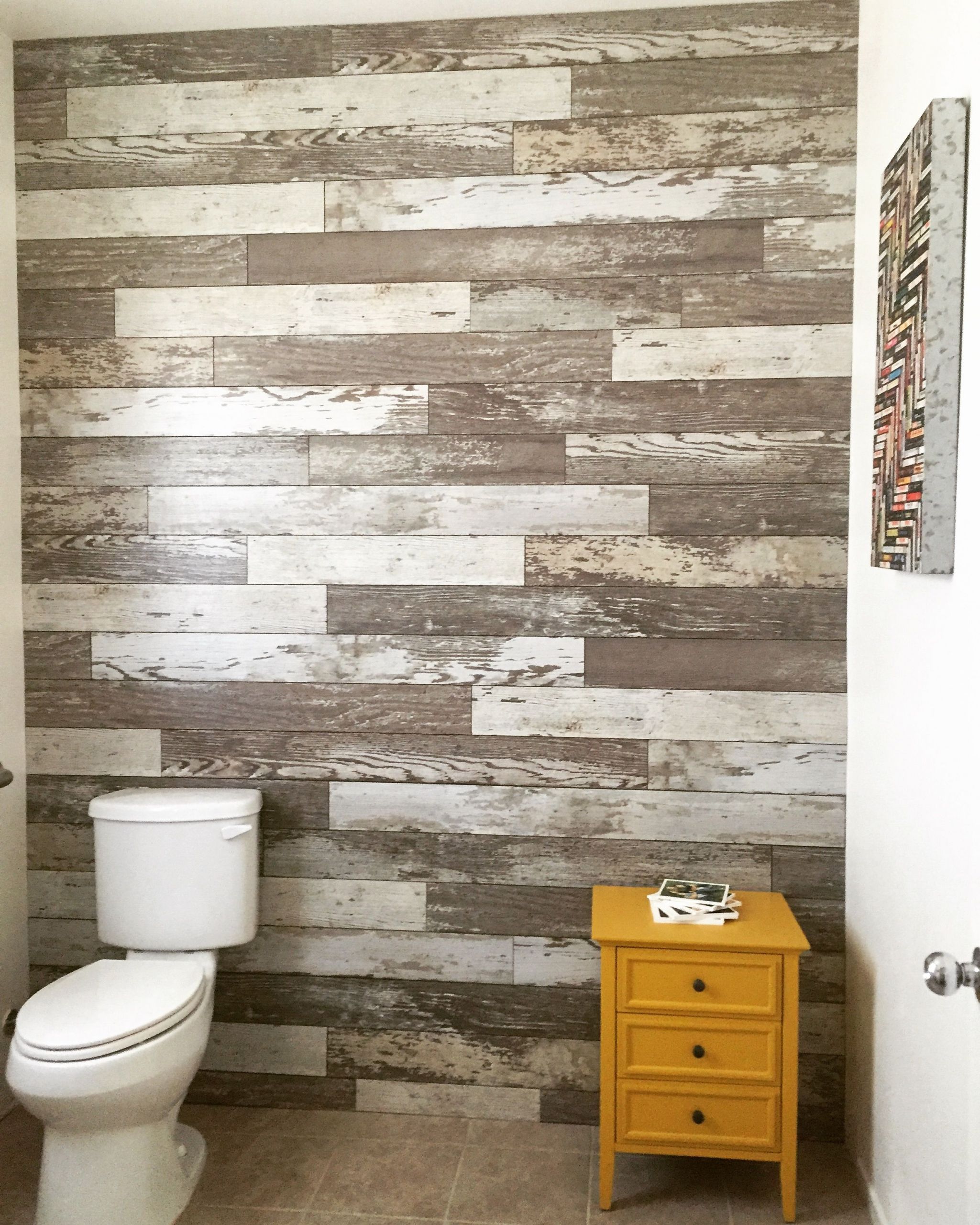Are you considering a bathroom renovation and want to incorporate the stylish and budget-friendly appeal of laminate flooring? It’s a popular choice for many rooms, but can it withstand the unique challenges of a bathroom? This article dives into the pros and cons of using laminate flooring in a bathroom, factoring in moisture resistance, durability, maintenance, and aesthetics.

Image: theboiledpeanuts.com
Choosing the right flooring for a bathroom is crucial, as it needs to endure constant moisture exposure, potential spills, and the wear and tear of foot traffic. While traditional wood flooring might seem like an obvious choice, its susceptibility to water damage makes it a risky investment in a bathroom. This is where laminate flooring enters the picture, offering a durable and water-resistant alternative that can mimic the look of natural wood for a fraction of the cost.
Understanding Laminate Flooring
What is Laminate Flooring?
Laminate flooring is a multi-layered composite material, typically consisting of a core layer of high-density fiberboard, a decorative layer that mimics the appearance of wood, tile, or stone, and a wear layer that offers surface protection. This construction makes laminate flooring incredibly durable and resistant to scratches, dents, and fading.
The Rise of Water-Resistant Laminate
Traditionally, laminate flooring wasn’t considered ideal for bathrooms due to its susceptibility to water damage. However, advancements in manufacturing have led to the development of water-resistant laminate flooring. These innovative products boast a core layer that resists moisture penetration, offering greater protection against spills and leaks.

Image: menarrota.blogspot.com
Is Laminate Flooring Suitable for Bathrooms?
Pros of Laminate Flooring in Bathrooms
Here’s why laminate flooring can be a compelling option for your bathroom:
- Water Resistance: Modern water-resistant laminate flooring offers a protective barrier against spills and splashes, making it a more viable option for bathroom use than traditional laminate.
- Durability: Laminate flooring is incredibly durable, resisting scratches, dents, and fading. It can withstand the high foot traffic typical in bathrooms.
- Easy Maintenance: Laminate flooring is very easy to clean and maintain. A simple sweep or mop is all it takes to keep it looking its best.
- Aesthetics: Laminate flooring offers an impressive array of styles, patterns, and textures, allowing you to create a bathroom that reflects your unique taste.
- Cost-Effectiveness: Laminate flooring is generally more affordable than other flooring options like hardwood or tile.
Cons of Laminate Flooring in Bathrooms
While laminate flooring offers numerous advantages in a bathroom setting, it’s important to consider its potential drawbacks:
- Limited Water Resistance: While water-resistant laminate offers greater protection, it’s not completely waterproof. Prolonged exposure to water or standing water can still cause damage.
- Installation Challenges: Laminate flooring requires careful installation to ensure proper water resistance and prevent warping or buckling. Hiring a professional installer might be necessary.
- Lack of Natural Materials: Laminate flooring is a synthetic product, which might not appeal to those seeking a natural look and feel.
- Limited Repair Options: Damaged or worn laminate planks can be difficult to repair. Replacing an entire plank might be necessary, which could be problematic if the flooring is discontinued.
Choosing the Right Laminate Flooring for Your Bathroom
Here are some key considerations when selecting laminate flooring for your bathroom:
1. Water Resistance
Choose laminate flooring specifically designed for wet areas. Look for keywords like “waterproof” or “water-resistant” on the packaging. These floors often have a waterproof core and sealed edges. It’s also wise to choose a laminate with a higher moisture resistance rating for increased peace of mind.
2. Core Technology
Pay attention to the core technology used in the laminate flooring. Some brands use special core materials that provide a higher level of moisture resistance. Look for laminate with a core made of a moisture-resistant material like waterproof fiberboard (WFB) or a sealed core construction.
3. Wear Layer
The wear layer protects the decorative layer and determines the flooring’s durability. Choose a laminate with a thicker wear layer, ideally a rating of AC3 or AC4, for high foot traffic areas like bathrooms.
4. Installation
Proper installation is crucial for the longevity of any flooring, especially in a bathroom. Consider hiring a professional installer to ensure optimal results and avoid potential issues.
5. Aesthetics
Laminate flooring offers a wide range of styles and textures, from wood-look planks to tile-inspired designs. Choose a look that complements your bathroom’s décor and personal preferences.
Maintenance and Care
Laminate flooring requires minimal maintenance. Here are some basic care tips:
- Sweep or Vacuum Regularly: Remove dirt and debris to prevent scratches and build-up.
- Damp Mop When Necessary: Use a mild cleaning solution and a damp mop to remove stains. Avoid soaking the floor.
- Avoid Harsh Chemicals: Do not use abrasive cleaners or chemicals that can damage the finish.
- Protect From Stains: Quickly clean up spills to prevent staining.
Can Laminate Flooring Be Used In Bathrooms
Conclusion
Laminate flooring can be a practical and stylish solution for bathrooms, offering durability, moisture resistance, and a variety of aesthetic options. By choosing water-resistant laminate, ensuring proper installation, and following basic maintenance practices, you can enjoy the benefits of this cost-effective flooring solution in your bathroom for years to come. Remember to do your research and consult with flooring experts to make an informed decision that meets your specific needs and preferences.

:max_bytes(150000):strip_icc()/OrangeGloEverydayHardwoodFloorCleaner22oz-5a95a4dd04d1cf0037cbd59c.jpeg?w=740&resize=740,414&ssl=1)




